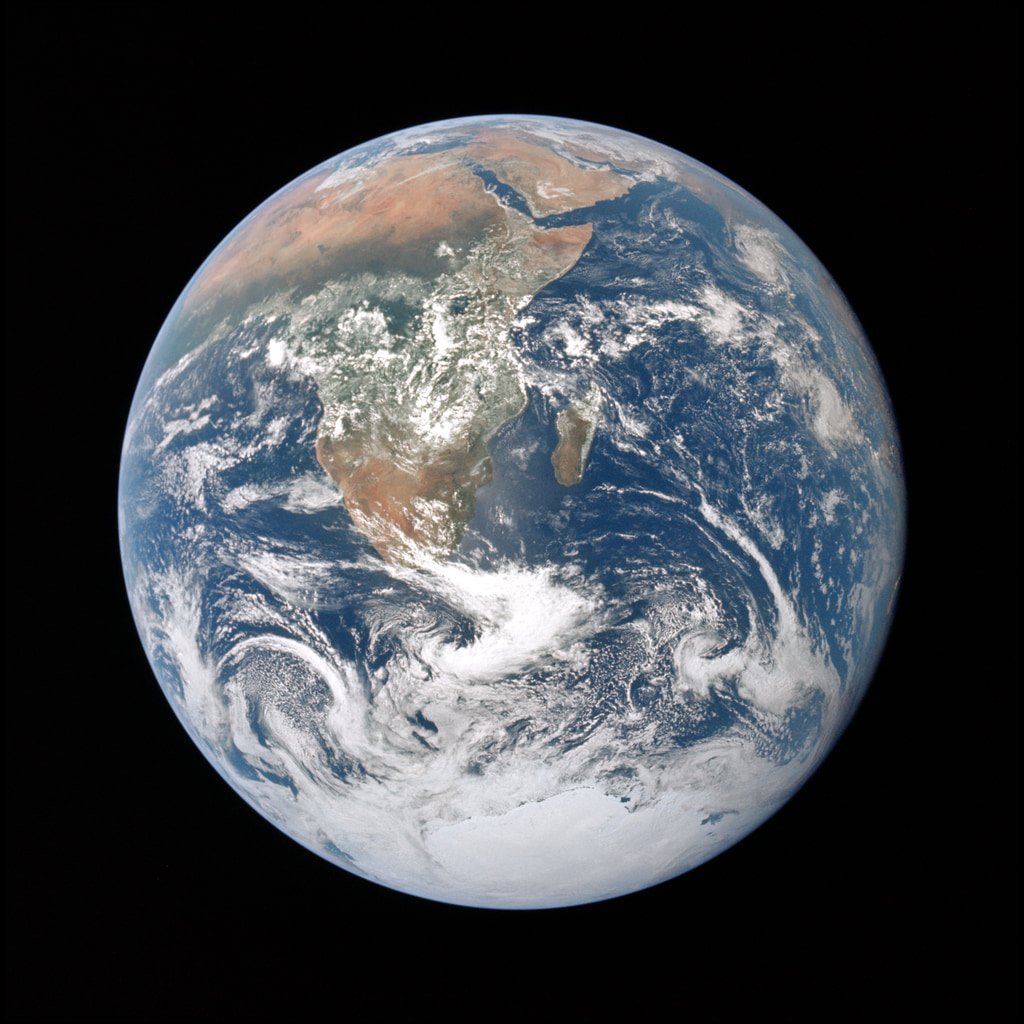50 years after Blue Marble
50 years ago, on December 7, 1972, an astronaut looked out the window of the Apollo 17 spacecraft and snapped a photo that would become a symbol of Earth as our precious, fragile home. The image, centered at about 40 E longitude, shows Earth at local noon near the winter solstice. Africa, Arabia, Madagascar, and Antarctica are visible under swirling clouds.
Now, since 2015, NASA's Earth Polychromatic Imaging Camera (EPIC) onboard NOAA's Deep Space Climate Observatory (DSCOVR) satellite has been imaging the sunlit side of Earth between 13 and 22 times a day from the Lagrange point 1, a million miles away from Earth.
These images from EPIC show nearly identical views. The first, from Dec 7, 2022, was acquired on the 50-year anniversary of the iconic Blue Marble photo. The second, from summer solstice 2022, this image is centered further north than the original and shows Europe and Arctic sea ice. The third image, taken on December 4, 2021, nearly 49 years after the Blue Marble includes a new bonus feature: 2021’s only total solar eclipse.

December 7, 2022

June 21, 2022

December 4, 2021
For More Information
Credits
Please give credit for this item to:
NASA
-
Producer
Release date
This page was originally published on Wednesday, December 7, 2022.
This page was last updated on Wednesday, February 21, 2024 at 10:54 AM EST.
Datasets used in this visualization
-
[Deep Space Climate Observatory (DSCOVR): Earth Polychromatic Imaging Camera (EPIC)]
ID: 885
Note: While we identify the data sets used in these visualizations, we do not store any further details, nor the data sets themselves on our site.
